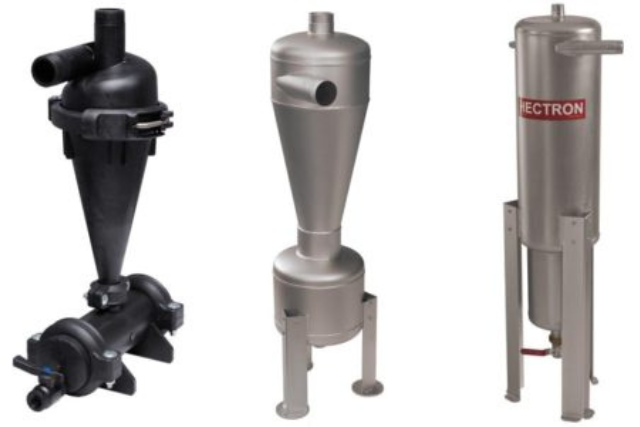The principle of the different water filtration systems

The principle of the different water filtration systems
Although there are different filtration systems for different problems and situations (especially in industrial environments), it is possible to group each of them under a few categories. Here is an overview of the water filtration systems that exist, whether for individuals, industry, farmers or other users.
What is a water filtration system?
A water filtration system is a mechanism designed to remove solid particles, large or small, from within a liquid through the use of a filtering process or product that allows only the liquid to pass through, but restricts solid particles.
A basic water filter removes impurities by using a fine physical barrier to reduce the level of contamination. Filters purify water to different levels for use in different purposes, such as providing clean water to the public, agricultural water free of contaminants and water for industrial use such as cooling systems.
The components of a water filtration system
A basic water filtration system has four essential components for filtration to occur. These are a filtering process, a fluid that has suspended solids, a force usually created by the pressure difference between two points and the mechanism (the filter). However, there are systems (such as Hectron automatic filters) where there is no filter media, but the whole process relies on a mechanical system.
Filter media can be divided into two different classes. A first type includes thin barriers such as filter cloth, filter screen or filter paper. The second class includes thick barriers which are usually sand beds, porous ceramic coke beds, porous metal and a precoat filter aid which is often used in the filtration of fluids that include gelatinous precipitates in industry.
Types of water filtration systems
There are five common types of filters widely used in industrial and commercial situations. These types of water filters are discussed below.
Absorption water filtration system
In this type of water filtration system, carbon is commonly used because it is very effective at capturing waterborne contaminants. The carbon uses its nooks and crannies which can trap any chemical impurities in the water.
The granular activated carbon filtration system is able to reduce unwanted tastes in the water and odours by absorption. The more expensive filters are lined with carbon blocks which are generally more effective at filtration. There are other substances that can be used instead of carbon and these are wood or coconut shells.
Ion exchange water filtration system
Ion exchange is a filtration process used to soften hard water by exchanging elements such as magnesium ions and calcium ions that reside in hard water for other elements such as hydrogen or sodium. The ion exchange process physically removes all hard minerals, reducing limescale and then making the water suitable for applications where it is kept at high temperatures, such as in commercial coffee machines.
A resin that uses sodium ions to soften water must be charged periodically to ensure that the resin does not become ineffective.
Resins that use sodium ions are not generally used in drinking water, as drinking water must be limited to 200 mg/litre. As the sodium ion exchange process increases the salt levels in the water, a hydrogen-based resin is preferred for filtration systems.
Mechanical water filtration system
The mechanical water filtration system is capable of removing dirt, sediment or any other particles in the water through the use of a mechanical barrier. The filter can be a simple mesh capable of filtering huge debris or a ceramic filter consisting of an extremely complex porous structure for ultra fine removal of very small disease-causing organisms.
A filter that uses mechanical filtration has an index given in microns to designate the efficiency of the filter in terms of the size of the suspended particles and its ability to remove them. For example:
- 5 microns: this filtration system can remove all particles large enough to be seen with the naked eye.
- 1 micron: at 1 micron, particles too small to be seen without a microscope can be filtered out.
- 0.5 micron: this system can remove bacteria.
Other so-called mechanical filtration processes are achieved through systems such as Hectron hydrocyclones where the separation process is based on the creation of a vortex vortex. The heavy particles fall to the bottom of the hydrocyclone cone and the water, freed of these particles, is discharged from the top of the device.
Reverse osmosis
The technique for removing dissolved solids such as magnesium or calcium from water is reverse osmosis. The water passes through a semi-permeable membrane at high pressure and leaves behind most contaminants.
This filtration system is very effective in purifying water and is usually coupled with other filters such as mechanical (sediment) and absorption (activated carbon) filters to minimise impurities in the water.
Water pressure is used to force the water through a membrane, so no electricity is required, but this leaves a considerable amount of wastewater that must be sent to the sewer. The reverse osmosis unit is quite expensive because of the multi-stage water filters. Although expensive, the system filters the water so that it can be used in applications requiring nearly 100% pure water.
Sequestration water filtration system
Sequestration refers to the process of isolating a substance by chemical means. A food grade polyphosphate is typically used in these filters to isolate minerals such as calcium and magnesium that have corrosive effects. The polyphosphate is introduced in small quantities. Due to the presence of hard minerals in the water, the scale inhibition of polyphosphate is not appropriate, but the process of water softening can be achieved by the ion exchange process. The use of such filtration is recommended in areas where the water is alkaline or hard.
